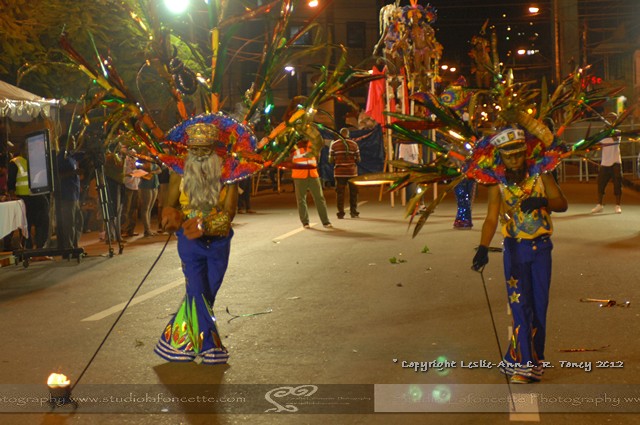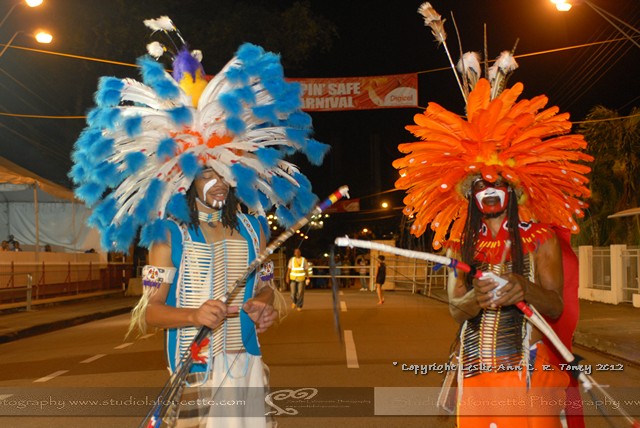Hey folks, I started this blog because I heard too many myths and strange, inaccurate statements about Trinidad carnival. If we don’t tell our own story it will get kidnapped by people for whom it means nothing, who have a different agenda to historical accuracy and a pride in the knowledge of your own heritage. It won’t necessarily happen because people are malicious, but because that’s just how things are. Ask a Trini child (Trini-American, British or whatever) something about Trinidad carnival. Like ask them “What is a Pierrot Grenade?” or “What is kaiso? Why do men dress up in ladies clothes for jouvert? or even “What does the word mas mean and how do you spell it?” You might be surprised and disappointed at how little they know.*
But tradition lives on. Above are two photos of young people playing “Indian” mas. On Wednesday night there were young moko jumbies, young devils and bats and sailors. And today in Port-of-Spain scores of school children, accompanied by parents and teachers, will cover the city in a parade of traditional mas. In most schools across the country today there will be kaiso and mas competitions with a “jump up” and most of the groups performing in Canboulay are populated by youth. So tradition lives on. But that’s enough chatter from me. If you want more words on mas, check out this young African sister’s blog Zee Speaks! – Alternative Perspectives on Black Cultural & Social Issues: An Anti Master Narrative. She has a 2-year-old series dedicated specifically to carnival called Kaiso.
*Answers to those questions and more can be found by clicking on the links above. For additional reading you can check out Rituals of Power and Rebellion: The Carnival Tradition in Trinidad & Tobago 1763 – 1962 by Hollis “Chalkdust” Liverpool, PhD, or the Trinidad & Tobago National Library System (NALIS).
Enjoy
L


0 thoughts on “Tradition Lives on (BdC 16/21)”